What’s better than a cold winter morning spent birdwatching from your window with a steaming cup of coffee? While many species flock to the south for the winter, Missouri has dozens of winged residents that stay within the state’s boundaries year-round, toughing out the cold months by living on seeds, grains, and wild berries. Check out this list of the 20 birds that spend their winters in Missouri and learn about their locations and cold-weather diets.
1. American Robin
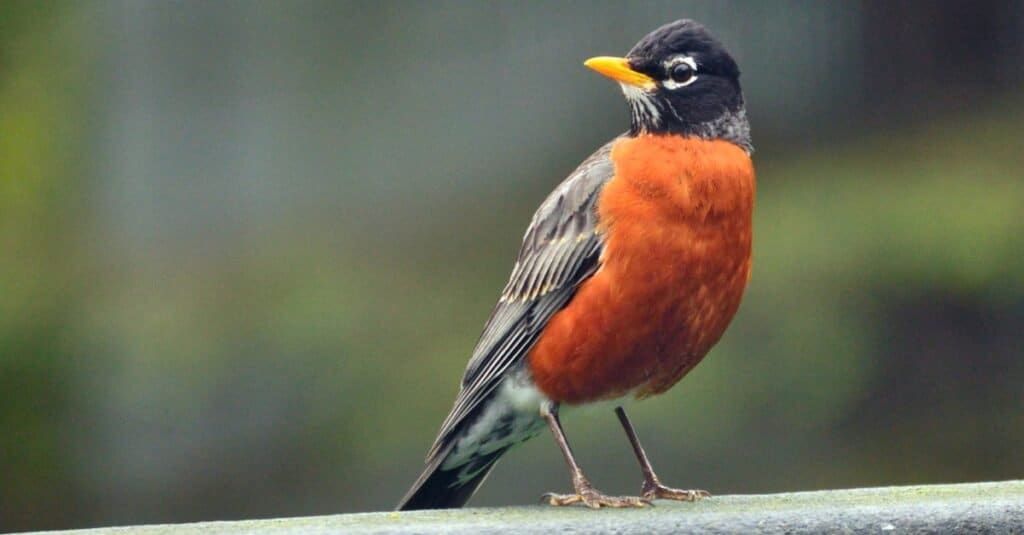
The male American robin is generally the last bird heard singing at sunset.
©iStock.com/PhotosByMSA
The American robin is a full-time resident in Missouri. While some populations move south for the winter, others move to lower elevations and stay on the move in search of a fruit source. About 60% of the robin’s diet comes from fruit, mainly wild berries and cultivated fruits.
2. Mourning Dove
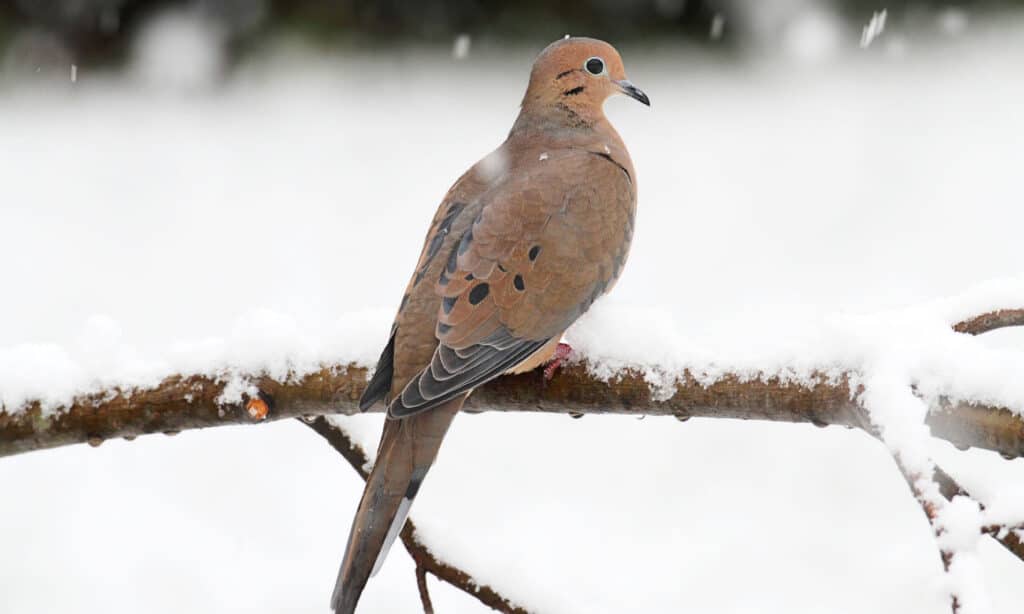
Mourning doves are less selective in the winter.
©iStock.com/SteveByland
The mourning dove is one of the most popular game birds found throughout the state year-round. These birds very rarely eat insects. Instead, 99% of their diet is from seeds of cultivated grains, like grass and ragweed.
3. Red-Bellied Woodpecker
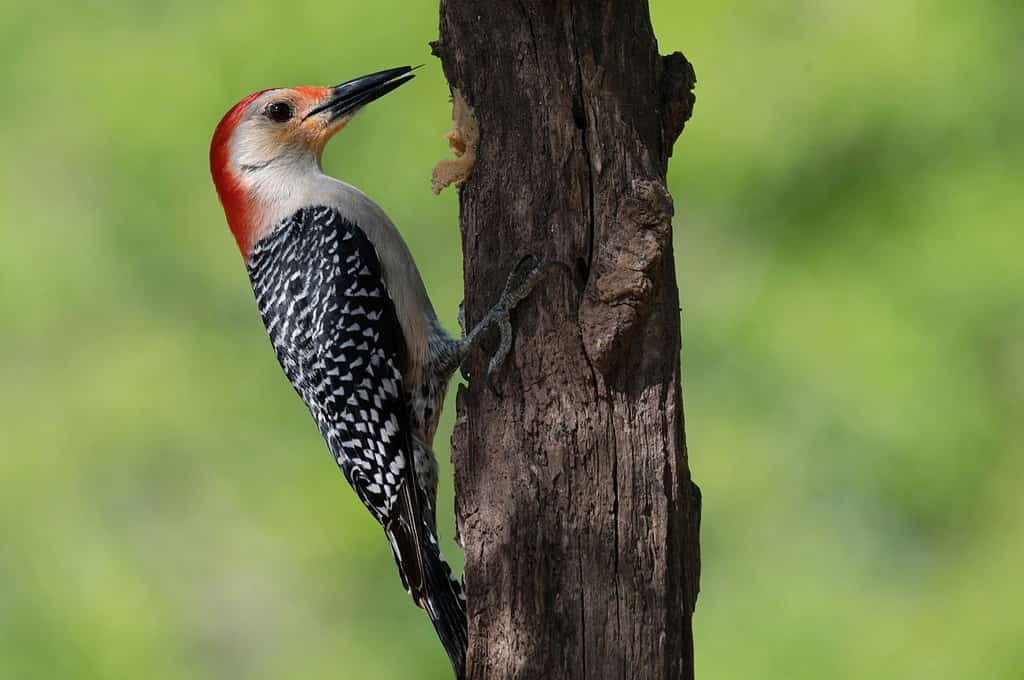
Red-bellied woodpeckers live in open woodlands and parks.
©Connie Moore/Shutterstock.com
These woodpeckers are the most common species found in Missouri and they live throughout the state year-round. They are most prevalent in open woodlands and parks. Red-bellied woodpeckers mainly eats seeds at birdfeeders during the winter.
4. Yellow-Bellied Sapsucker

While sap is not the only thing yellow bellies eat, it accounts for a significant proportion of their diet.
©Dennis W. Donohue /Shutterstock.com
While the yellow-bellied sapsucker doesn’t breed in Missouri, it resides in the state during the winter, primarily in young deciduous trees. These birds drill sap wells in trees and will also look for fruiting wild trees.
5. Belted Kingfisher

Belted
kingfisher
s eat berries during the winter.
©Harry Collins Photography/Shutterstock.com
The belted kingfisher is a year-round resident in Missouri, where they make burrows along stream banks. While they mainly eat fish, crustaceans, amphibians, and other small creatures, these birds eat berries during the winter.
6. Cedar Waxwing
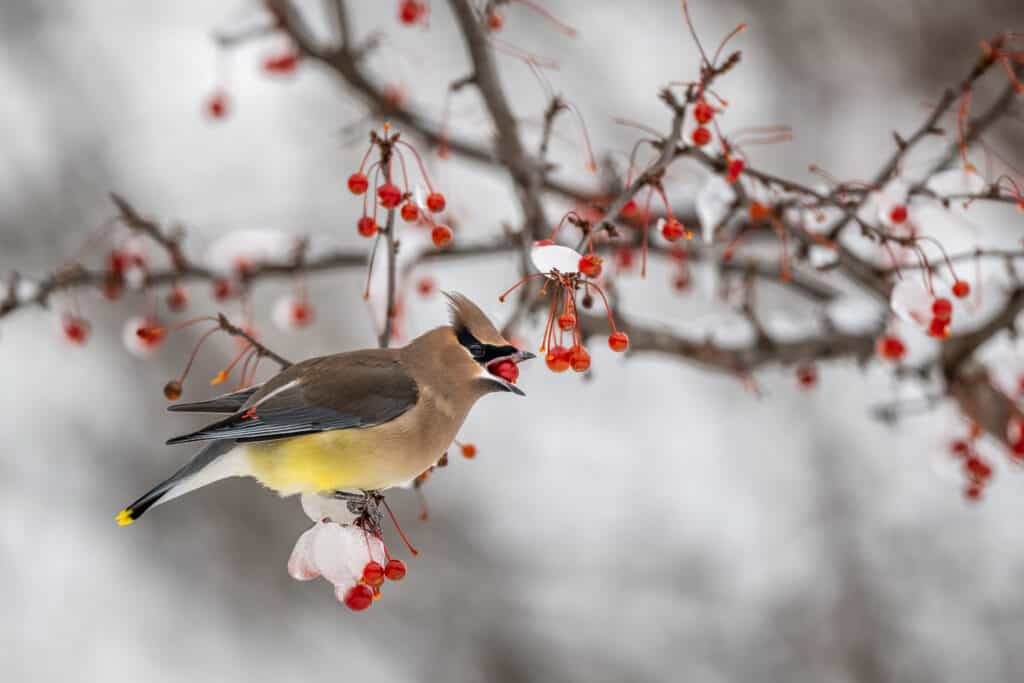
Their diet includes berries, small fruit, flowers, oozing sap, beetles, ants, and caterpillars.
©Skyler Ewing/Shutterstock.com
While cedar waxwings are more common in Missouri during the spring and summer, you can occasionally find them in the state during winter. You are likely to see these birds in groups, lined up on a branch. During winter, they mainly eat cedar berries and other fruits.
7. Blue Jay

Blue jay
s are common throughout Missouri.
©FotoRequest/Shutterstock.com
These birds are a common sight throughout Missouri, where you will find them wherever there are trees, like forests, parks, suburbs, and woodlands. They eat vegetable matter during the winter, such as acorns, seeds, grains, and berries.
8. Horned Lark

Horned larks live in plowed agricultural fields.
©mirceax/iStock via Getty Images
The horned lark is the only native lark species found in North America, where they inhabit large, empty fields. In Missouri, you can find them in plowed agricultural fields. These birds feed on waste grain and small seeds during the winter.
9. House Finch
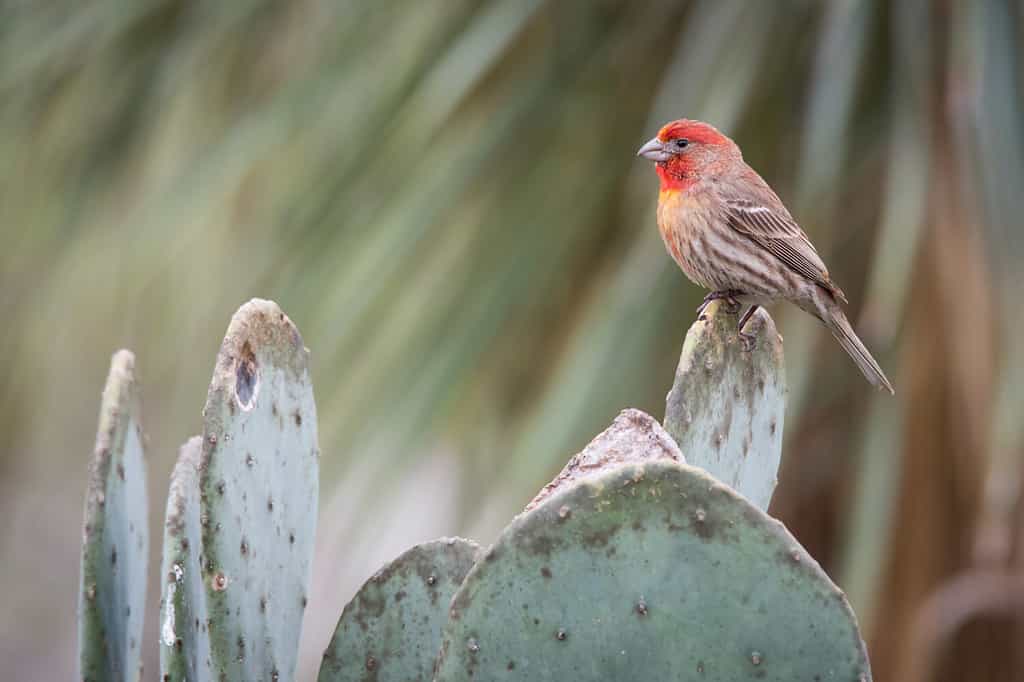
House finches live in urban and suburban areas of Missouri.
©Puffin’s Pictures/Shutterstock.com
The house finch is a common bird throughout Missouri, especially in urban and suburban areas. They live in the state all year and feed on seeds and fruits during the winter. They also look for insects where they can.
10. Dark-Eyed Junco
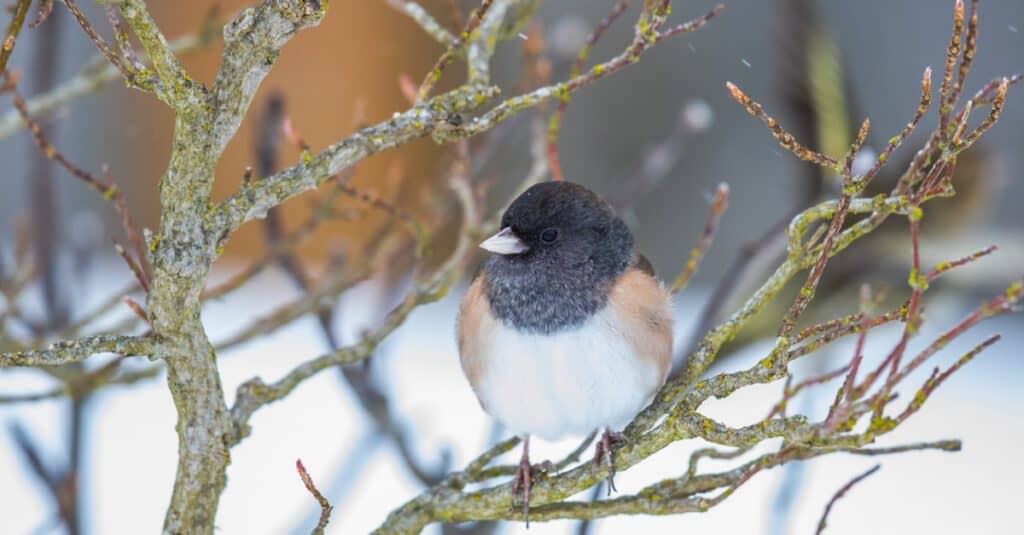
Juncos are sometimes called snowbirds.
©iStock.com/Jeff Huth
The dark-eyed junco breeds in Canadian forests but they arrive in Missouri at the beginning of winter, migrating north once spring arrives. These birds survive on seeds of grasses and weeds during the winter.
11. Brown-Headed Cowbird
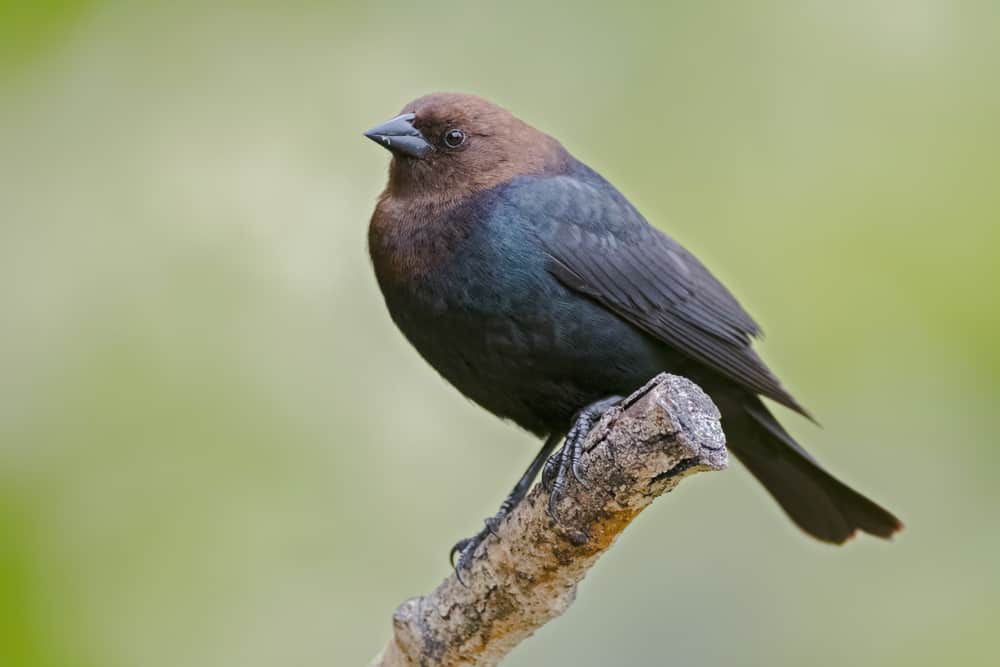
Brown-headed cowbirds are brood parasites.
©punkbirdr/Shutterstock.com
These glossy black and brown birds live throughout Missouri, where most stay year-round. Brown-headed cowbirds are common brood parasites, meaning they lay their eggs in other species’ nests. Seeds make up about 90% of their diet during the winter. The rest comes from insects they can find.
12. American Goldfinch
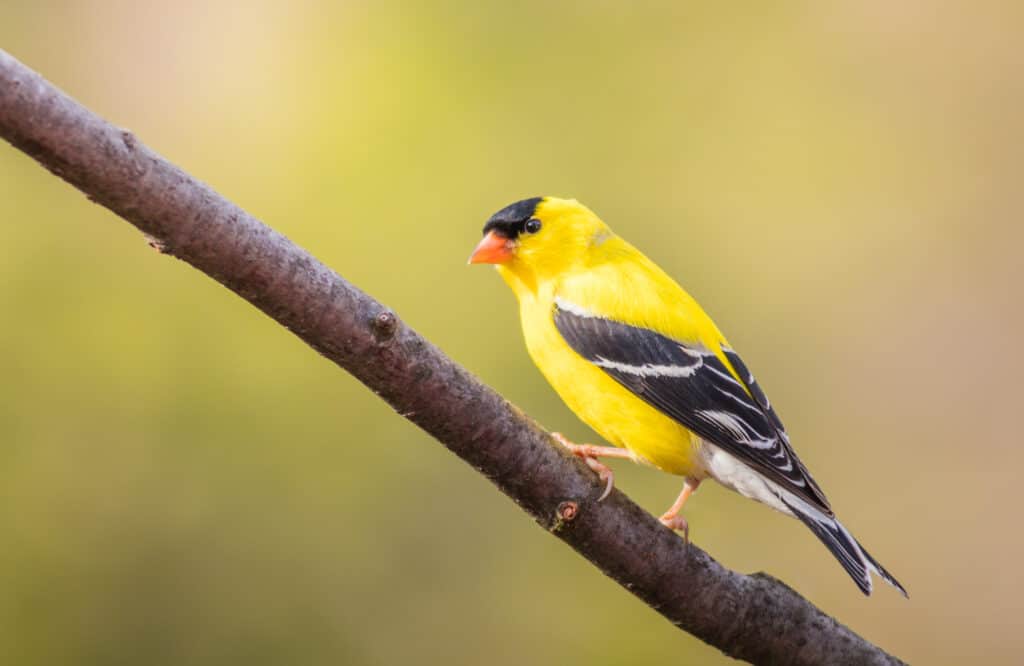
Male goldfinches are pleasing to look at with their yellow and black plumage.
©Rabbitti/Shutterstock.com
American goldfinches are year-round residents of Missouri, where you can typically find them in rural areas, weedy fields, thickets, or near backyard bird feeders. they rely heavily on bird feeders filled with black oil sunflower seeds during the winter.
13. House Sparrow

The house sparrow is abundant and wide-ranging in Missouri.
©iStock.com/Vronja_Photon
House sparrows are some of the most common birds in North America. They are also one of the most abundant and wide-ranging birds in Missouri. However, they are considered an invasive species because they are originally from the Middle East. During the winter, these birds eat mostly grains and seeds.
14. Tufted Titmouse
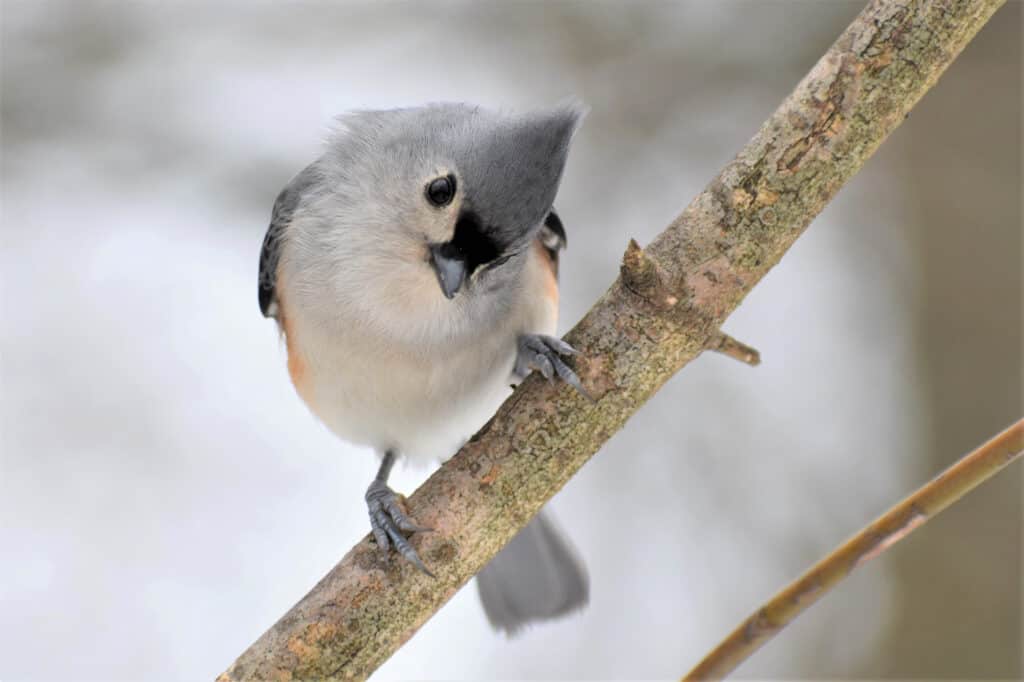
The tufted titmouse lives in deciduous forests.
©Lester Graham/Shutterstock.com
While these birds can be found across the state, they are most common in the southern half, where they prefer deciduous forests with tall trees. The tufted titmouse is a regular at backyard feeders during the winter. where it dines on sunflower seeds and suet.
15. Northern Cardinal

Northern cardinals are permanent residents in Missouri.
©Bonnie Taylor Barry/Shutterstock.com
The northern cardinal is a common permanent resident in Missouri and one of the most popular songbirds of the state. These birds live in many habitats and eat seeds, grains, nuts, fruits, and suet during the winter.
16. White-Throated Sparrow

White-throated sparrows live mainly in the state’s eastern and southern regions.
©Fiona M. Donnelly/Shutterstock.com
The white-throated sparrow lives throughout Missouri during the winter, but you are more likely to spot it in the state’s southern and eastern portions. They live on woodlots in loose flocks, where they like to frequent bird feeders. Their winter diet is mainly seeds of weeds and grasses.
17. Carolina Wren
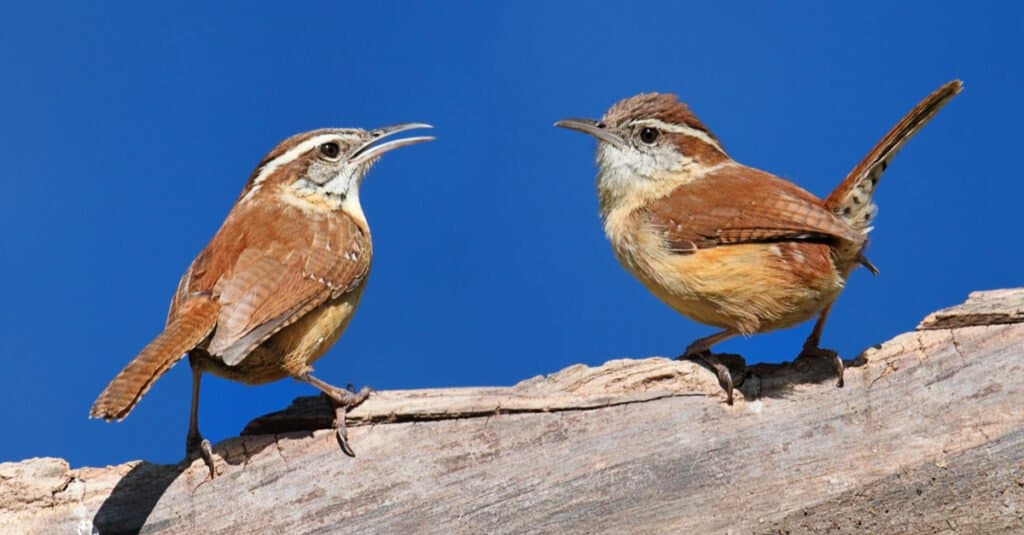
It is harder for a female Carolina wren to defend her territory without a mate.
©Steve Byland/Shutterstock.com
While Carolina wrens may be small, they do well at surviving Missouri winters. These birds live throughout the state year-round, although they can be difficult to spot due to their secretive behavior. Carolina wrens scavenge seeds, nuts, and fruits during the winter. They also like suet and peanuts at feeders.
18. White-Breasted Nuthatch

White-breasted nuthatches live in Missouri year-round.
©J. A. Mikulich/Shutterstock.com
The white-breasted nuthatch is a common statewide bird and permanent resident, even during the winter. They live in forests, woodlots, mature deciduous forests, and groves. These birds eat seeds, suet, and peanut butter mixtures at feeders.
19. Black-Capped Chickadee
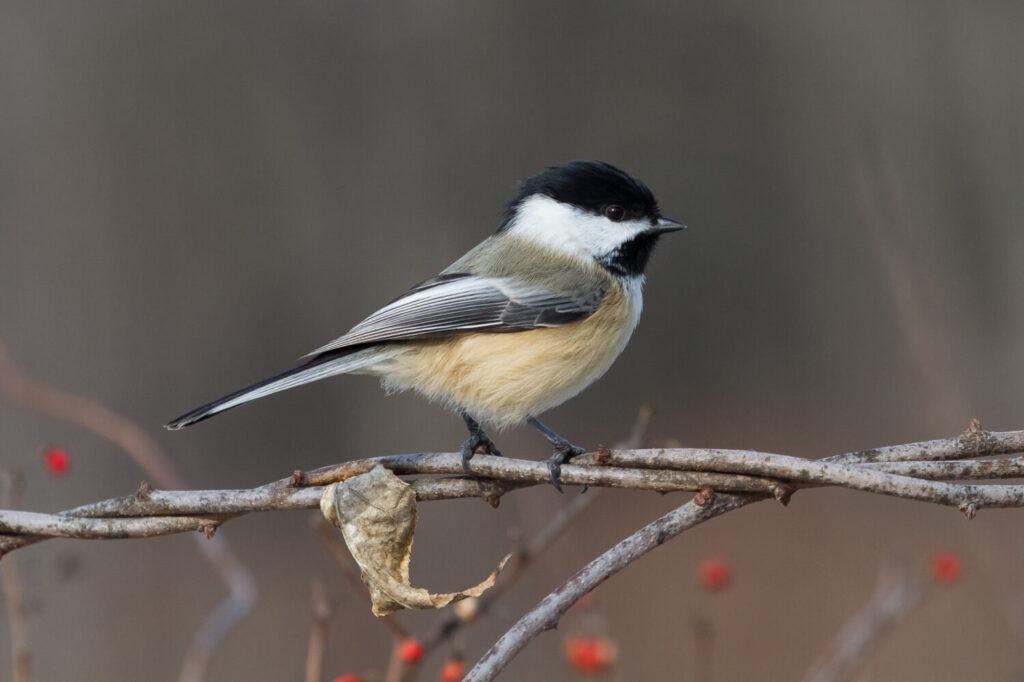
Black-capped chickadees are common in Southern Missouri during winter.
©Paul Roedding/Shutterstock.com
During the breeding season, you will find the black-capped chickadee in the northern regions of the state. Occasionally during the winter, these birds move to Southern Missouri. Black-capped chickadees eat insects, seeds, and berries during the winter. They can also consume the fat of dead animals.
20. European Starling
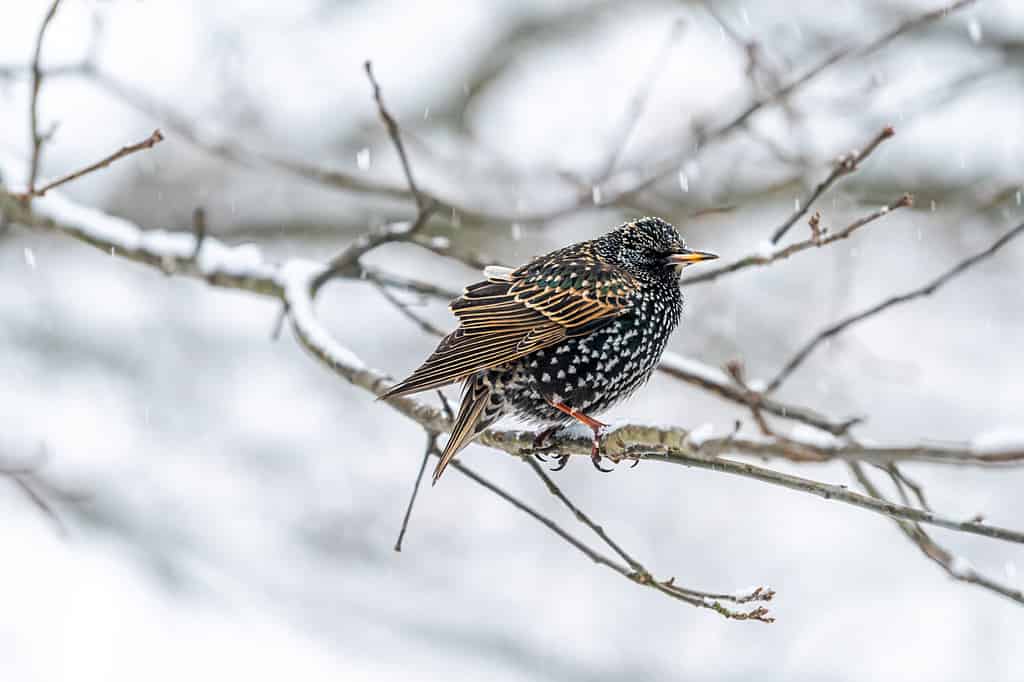
European starlings forage for seeds in parks and fields.
©Kristi Blokhin/Shutterstock.com
The European starling is a common bird throughout Missouri, including cities, suburbs, and rural areas. They like to make their nests in trees and buildings, and they forage in parks, fields, and pastures. These birds eat berries, fruits, and seeds during the winter.
A Summary of the 20 Birds That Spend Their Winters in Missouri
| Number | Birds That Spend Their Winters in Missouri |
|---|---|
| #1 | American robin |
| #2 | Mourning dove |
| #3 | Red-bellied woodpecker |
| #4 | Yellow-bellied sapsucker |
| #5 | Belted kingfisher |
| #6 | Cedar waxwing |
| #7 | Blue jay |
| #8 | Horned lark |
| #9 | House finch |
| #10 | Dark-eyed junco |
| #11 | Brown-headed cowbird |
| #12 | American goldfinch |
| #13 | House sparrow |
| #14 | Tufted titmouse |
| #15 | Northern cardinal |
| #16 | White-throated sparrow |
| #17 | Carolina wren |
| #18 | White-breasted nuthatch |
| #19 | Black-capped chickadee |
| #20 | European starling |
The photo featured at the top of this post is © iStock.com/SteveByland
Thank you for reading! Have some feedback for us? Contact the AZ Animals editorial team.







